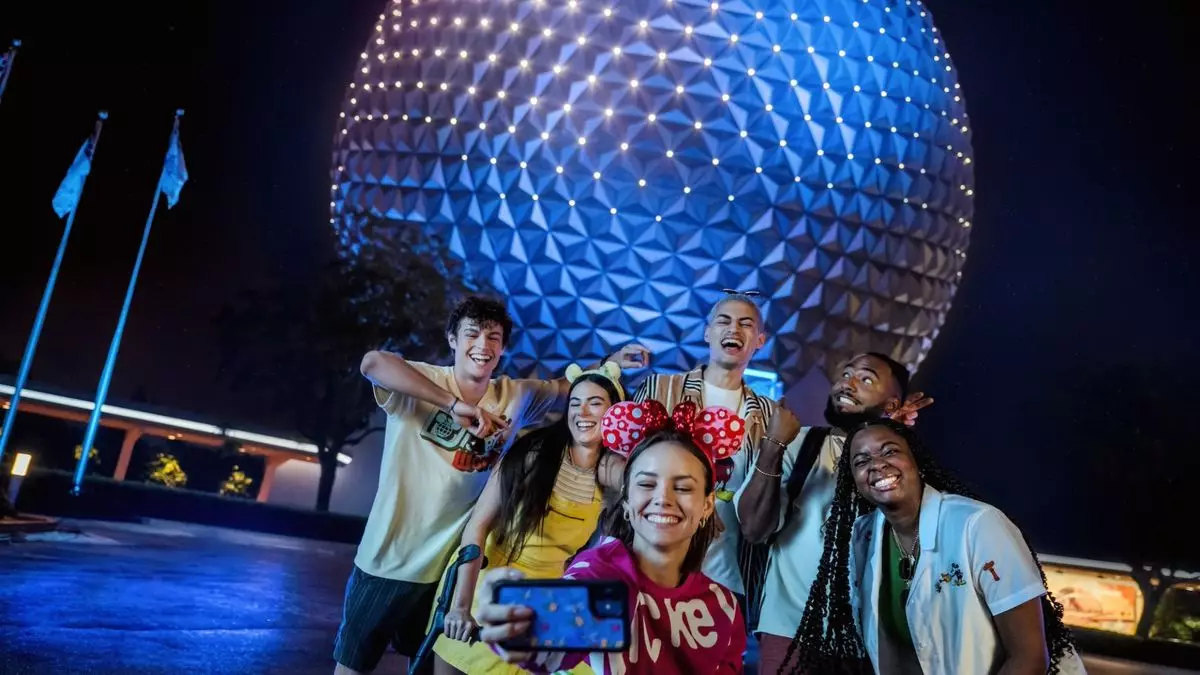Disney has historically been at the forefront of entertainment innovation, continuously evolving to enhance guest experiences across its many parks. The introduction of the Lightning Lane Premier Pass signifies another significant shift in their operational model, providing a skip-the-line service that promises unparalleled convenience for park visitors. However, this new initiative has stirred conversations about access, pricing, and the overall theme park experience, especially in a post-pandemic landscape where guests are particularly sensitive to value.
The Lightning Lane Premier Pass will ultimately replace the need for guests to schedule specific times for attractions, an aspect that has characterized Disney’s queue management strategies over the years. This pass will have pricing that varies greatly—from $129 to a hefty $449 per person—leveraging demand fluctuations and guest demographics. It will debut at both Walt Disney World in Florida and Disneyland in California, marking a significant transitional moment for ticketing strategies within the Disney ecosystem.
This new product builds on existing services: the Lightning Lane Multi Pass, which allows for scheduling at multiple attractions, and the Lightning Lane Single Pass for the most iconic rides. The Multi Pass typically costs between $15 and $39, while the Single Pass, which is crucial for popular attractions such as “Star Wars: Rise of the Resistance,” ranges from $10 to $25. However, unlike its predecessors, the Premier Pass offers a more spontaneous experience where guests are empowered to make real-time decisions about their park visits.
A key feature of the Premier Pass is its exclusivity. In Florida, the pass is restricted to guests staying at select Disney deluxe resorts, which elevates the overall hospitality experience but arguably creates a divide among visitors. This begs the question: are we moving towards a tiered system that prioritizes higher-income guests? Individuals staying at budget accommodations or visiting for a single day may find themselves at a severe disadvantage, as they won’t have the option to purchase this highly coveted pass.
Additionally, the Premier Pass, tailored for Orlando’s parks, can be bought only seven days prior to the stay—effectively limiting spontaneous visitors from enjoying the benefits. Meanwhile, Disneyland’s rollout is a bit more lenient, allowing purchases up to two days before park visits, yet the price point remains steep. This disparity raises concerns over equitable access among theme park goers and prompts reflection on the future of the Disney experience, which has traditionally prided itself on inclusivity.
The allure of the Lightning Lane Premier Pass extends beyond simple access to attractions. It includes enticing perks like unlimited digital downloads of attraction photos and videos. This cultural shift towards personalized digital content aligns with today’s social media-driven environment, where visitors often seek to document and share their special moments. However, while these additions provide value, one must question whether they compensate for the unsettling implications of rising costs.
Furthermore, guests must still contend with standby lines and Disney’s virtual queue system in times of peak demand. The reality is that many of Disney’s attractions translate into a wait for half or even three-quarters of a day, even if you wield the Premier Pass. This raises inquiries about the effectiveness of Disney’s queue management approach, especially as parks become more crowded, and technology improves. How much value does a rapidly accessible pass hold if guests still face substantial wait times?
Ultimately, the introduction of the Lightning Lane Premier Pass reflects both a strategic shift in operational practices and a reaction to current market challenges. As Disney continues to navigate the complexities of guest expectations, aging infrastructure, and heightened competition from other entertainment providers, its decisions will be crucial in determining the long-term sustainability of its world-renowned parks.
In essence, while the new pass may provide convenience for a certain demographic, it also risks alienating a significant portion of their customer base. As prices continue to climb, guests must evaluate how much they are willing to invest in the experience when compared to alternative entertainment options. The future of Disney may very well hinge on whether it can maintain its core identity of magical accessibility amidst an evolving and increasingly commercial landscape.

